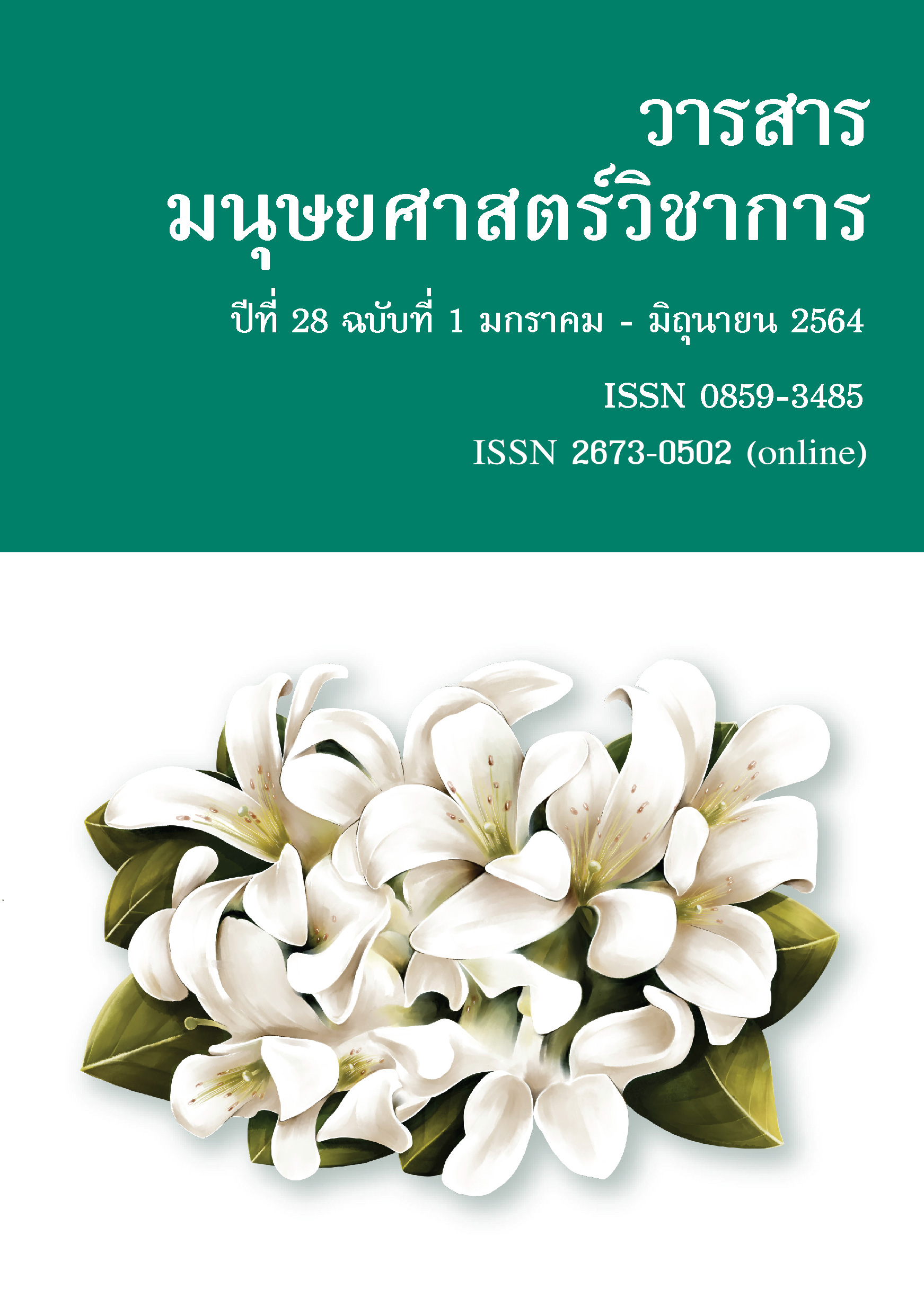Leichte Sprache A Case Study on Causative and Conditional Sentences
Main Article Content
Abstract
This research aims to examine the concept of “Leichte Sprache” (Easy language) and its associated linguistic practices, which have been created to tackle the textual complexity issue and ensure people with special needs access to information so that they may participate equally in society. At present, there are “Easy-to-Read” guidelines that have been developed by various institutions; however, these differ in many respects. The focus of this research is therefore on analyzing the practices used when transforming standard German text into “Leichte Sprache”, particularly, in causative and conditional sentences. The analyzed data were collected from eight texts produced by the Federal Ministry of Labour and Social Affairs of Germany; four of which are in standard German, while the other four are “Easy-to-Read” versions. The result suggests that “denotative equivalence” and “pragmati cequivalence” were widely used. Moreover, some information from the source text was omitted in the translated texts. Additionally, further syntactic analysis showed surprisingly high use of the subordinate conjunctions “wenn” (if) and “weil” (because), in which verbs are placed at the end of the s entence, a strategy which conflicts with the “Easy-to-Read” guidelines of some renowned institutions. The use of the conjunctive adverbs “deshalb” and “darum” (therefore) placed a distant second, followed by the coordinating conjunction “denn” (because).
Article Details
References
Blühdorn, H. (2006). Kausale Satzverknüpfungen im Deutschen. 10(2006), 253-282.
Bredel, U., & Maaß, C. (2016). Leichte Sprache: Theoretische Grundlagen, Orientierung für die Praxis. Berlin: Dudenverlag.
Breindl, E., & Waßner, U. H. (2006). Syndese vs. Asyndese. Konnektoren und Andere Wegweise für die Interpretation semantischer Relationen in Texten. In H. Blühdorn, E. Breindl, & U. H. Waßner (Eds.), Textverstehen. Grammatik und darüber hinaus (pp. 46-70). Berlin/New York: de Gruyter.
Brinkmann, H. (1971). Die deutsche Sprache: Gestalt und Leistung (2. Aufl.). Düsseldorf: Schwann.
Christmann, U. (2017). Wie leicht darf Leichte Sprache sein? Empirische Lücken in einem gut gemeinten Konzept. In B. Bock, U. Fix, & D. Lange (Eds.), “Leichte Sprache” im Spiegel theoretischer und angewandter Forschung (pp. 35-57). Berlin: Frank & Timme.
Eisenberg, P. (2013). Der Satz (4. Aufl.). Stuttgart Weimar: Verlag J. B. Metzler.
Imo, W. (2016). Grammatik: Eine Einführung. Stuttgart: J.B. Metzler Verlag.
Inclusion Europe. (2009). Informationen für alle: Europäische Regeln, wie man Informationen leicht lesbar und leicht verständlich macht. Entwickelt im Rahmen des Projektes Pathways - Wege zur Erwachsenenbildung für Menschen mit Lernschwierigkeiten. Brüssel: Inclusion Europe. Retrieved from http://www.inclusioneurope.org/LLL/documents/DEInformation%20for%20all.pdf
Kunkel-Razum, K., Eisenberg, P., & Razum, K. K. (Eds.). (2009). Der Duden: Die Grammatik (8. Aufl.). Mannheim: Dudenverlag.
Maaß, C. (2015). Leichte Sprache: Das Regelbuch. Münster: Lit.
Netzwerk Leichte Sprache. (2013). Die Regeln für Leichte Sprache. Retrieved from https://www.leichte-sprache.org/wp-content/uploads/2017/11/Regeln_Leichte_Sprache.pdf
Schubert, K. (2014). Barrierefrei, reguliert, gelenkt. Partizipien optimierenden Eingreifens in Sprache und Kommunikation. In S. Jekat, H. E. Jüngst,
K. Schubert, & C. Villiger (Eds.), Sprache barrierefrei gestalten (pp.201-220). Berlin: Frank & Timme.
Wegener, H. (1999). Syntaxwandel und Degrammatikalisierung im heutigen Deutsch? Noch einmal zu weil-Verbzweit. 27, 326.
Weiss, D. (1982). Begründungserwartungen und implizite Kausalität. In Girke, W. (Ed.), Slavistische Linguistik 1981 (pp. 234-263). München: Sagner.
สำนักงานส่งเสริมและพัฒนาคุณภาพชีวิตคนพิการแห่งชาติ. (n.d.). อนุสัญญาว่าด้วยสิทธิคนพิการ (CRPD). Retrieved July 31, 2020, from http://neppr56.dep.go.th/index.php/claim/อนุสัญญาว่าด้วยสิทธิคนพิการ-crpd


